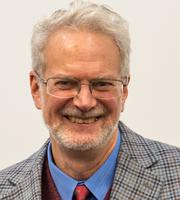Professor John Dickey represents childhood musings for many of us. For everyone who stared upward into the night sky counting stars and dreaming of what lay beyond and from where it all came, Professor Dickey’s research may one day provide the answer.
His field of research is vast. A solar system that takes the best part of 250 million years to complete a single lap around the centre of the Milky Way, is one of potentially hundreds of billions of galaxies which make up the observable universe.
We want to learn as much as possible about our solar system and how it came to be. We want to understand how the heavy elements came to be here on Earth and how we fit in to the entire universal conditions as well as how likely it is that other planets could sustain life.
"That’s the reason for our research, that’s our motivation,” Professor Dickey said.
Since his arrival in 2004 Professor Dickey has been instrumental in building up the astronomy group in the Physics discipline. He has been one of the driving forces behind the construction and operation of three 12-meter radio telescopes in Tasmania, Western Australia and the Northern Territory. This project has put the University of Tasmania at the forefront of efforts to map the Galaxy.

Tasmania is placed with a special view of our Galaxy. We get a clearer view of the Milky Way and the two dwarf galaxies orbiting it which are called Magellanic Clouds. The Galactic Centre goes straight overhead here whereas it may only peek above the horizon for a short time in the northern hemisphere, Professor Dickey said.
Tasmania’s ionosphere is more transparent than anywhere else, luring researchers interested in radio astronomy to the University of Tasmania after World War II. By the 1970s, radio telescopes with a range of frequencies were built to help conduct Galactic surveys and analyse pulsar timing. The gift of a 26-metre telescope from NASA in the 1980s made the University of Tasmania a significant contributor to very long baseline interferometry (VLBI) observations. Tasmania’s high southern latitude gives it a special importance for VLBI in particular, and for optical and radio astronomy in general.
We are part of a worldwide network of tracking stations observing various spacecraft across the globe. We can pick them up and track them when other stations wouldn’t normally have contact.
“The focus of my research in recent times has been
three intensive surveys of the Milky Way galactic plane. Radio telescopes are
able to see through the disk of the Milky Way, so we can see all the way across
the Galaxy which is about 75,000 light years to the far edge. I want to see what
else is out there."
Find out about the University of Tasmania's world-class research here.
Interested in conducting your own research? Apply now to become a research student.
